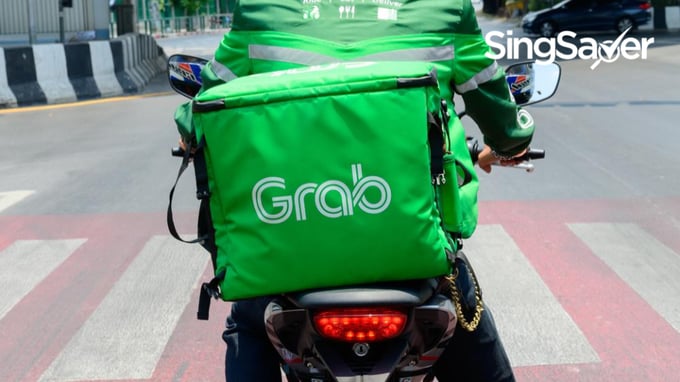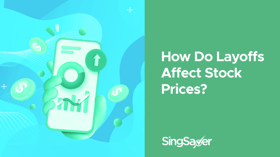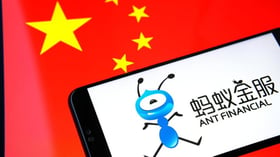Grab goes global with their upcoming listing in New York. Here’s all you need to know about Grab’s IPO via a SPAC and how you can invest in Grab’s shares.
A company that needs no introduction, Grab has been making waves in the news for the upcoming listing on Nasdaq.
Grab is a super-app that’s well-known not just in Singapore, but also in many other Southeast Asian countries, including Malaysia, Thailand and Vietnam. Besides ride-hailing services and food delivery services, Grab is also making a name for itself in the payments space with GrabPay, GrabPay Mastercard, as well as their latest offering — PayLater by Grab.
With users relying and making transactions on the app on a daily basis - be it for transportation, delivery, payments, insurance or more - it’s unsurprising that Grab is going one step further by going for a public listing.
Start managing and saving money like a pro with SingSaver’s weekly financial roundups! We dole out easy-to-follow money-saving tips, the latest financial trends and the hottest promotions every week, right into your inbox. This is one mailer you don’t want to miss.
Sign up today to receive our exclusive free investing guide for beginners!
Grab’s impending IPO
Grab announced on 13 April 2021 that it is set to go public through a SPAC merger with Altimeter Growth Corp. with a valuation of close to US$40 billion. Yes, you read that right - billion.
Once this merger is complete, Grab will trade on the Nasdaq under the ticker symbol GRAB. Upon going public, Grab will receive about US$4.5 billion in cash raised via a private investment in public equity arrangement.
This will be the largest SPAC deal and also the largest US equity offering by a company from Southeast Asia.
Besides raising capital, why else would a company like Grab go public? Here are a handful of reasons why companies choose to list on the stock exchange:
- Increase the company’s worth
- Liquidity of assets that allows founders, investors and shareholders to cash out
- Enhanced profile, visibility and public image of the company
Grab also shared that the decision to go public was driven by their strong financial performance in 2020, despite it being a year plagued by COVID-19.
Unlike companies such as Sea Limited, Tesla and Shopify that have listed on the Nasdaq via an IPO, Grab has chosen to list via a Special Purpose Acquisition Company (SPAC). Here’s a quick look at the differences between a SPAC and a traditional IPO before we dive into each of the listing types.
| SPAC | IPO | |
| Estimated time required | 4 to 5 months | 6 to 9 months |
| Fees | 2% of the amount raised upfront, plus an additional 3.5% once the deal is done | Typically 7% |
What is a SPAC
SPACs have become popular in recent COVID times, with 2020 being dubbed the year of the SPAC.
SPACs have risen in popularity because they greatly reduce the time it takes for a company to get listed on the stock exchange. For example, in 2020, 219 companies raised a total of US$73 billion — a 462% year-over-year jump that also outpaces traditional IPOs by US$6 billion.
The popularity of going public with a SPAC has been led by the US, with Hong Kong and Singapore yet to introduce plans to allow SPACs.
So what exactly is a SPAC?
A SPAC is a blank-cheque, shell company that is set up to raise capital in order to acquire private companies. This capital is raised from investors, with a plan to acquire another company (such as Grab) within two years.
Once the SPAC IPO is complete, the SPAC typically has up to two years to complete the merger with the company.
With a SPAC, companies looking to go public can bypass the traditional IPO process. Listing with a SPAC can be completed in four to five months, rather than the six to nine months it takes for a traditional IPO.
SPAC examples: Higher profile companies that have gone public via SPACs in 2020 include Nikola, DraftKings and Virgin Galactic.
| Pros | Cons |
| A quicker and shorter time frame for companies to go public, bypassing traditional IPO process | Investors don’t get to see the full financial disclosure that’s required for a traditional IPO |
| Greater certainty over the valuation as it’s agreed upon through the private negotiations | More speculation (and hence, risk) around companies acquired by SPACs, as financial history isn’t as crucial compared to traditional IPOs |
| Reduced regulatory demand and processes compared to traditional IPO | Favours institutional investors, as retail investors can only purchase Altimeter shares before Grab officially goes public |
What is an IPO
An Initial Public Offering (IPO) is the ‘traditional’ way a company chooses to go public.
It involves a private company issuing shares of stocks for public sale. To go for an IPO, a company would have to select an investment bank to lead the entire process. This includes handling all the financial administrative matters, gauging the demand for the company’s shares and determining the price that the stock will list at.
The IPO process is one that involves extensive regulatory compliance during the registration with the Securities and Exchange Commission (SEC). During the IPO process, the company would have to provide detailed financial information amongst other requirements, for full financial disclosure and transparency for the public.
IPO examples: Companies that were listed on the Nasdaq in 2020 with an IPO include Airbnb, Warner Music Group and Li Auto.
| Pros | Cons |
| Public gets full disclosure on the company’s financials | More stringent listing process that requires full financial disclosure |
| Full public attention and media coverage pre-IPO | Longer time frame for the entire process to be completed before the stock is listed |
| For investors, IPO stocks have the potential to jump on the first day of trading. This is especially so if the public deems the listing price as undervalued, or if investors are keen on the stock and want to have it in their portfolios. | Less certainty over the valuation as it is only discussed and determined by the investment bank before IPO |
Grab’s IPO and how you can invest in Grab’s shares
There are many reasons for an investor to want in on Grab’s shares.
Grab is the market leader for ride-hailing in Southeast Asia, operating in eight different countries. It’s become well integrated into our daily lives, with business not just in ride-hailing and food delivery, but also in digital payments (GrabPay) and financial services.
To invest in Grab today pre-merger, you can purchase shares of Grab’s SPAC that is already listed on the Nasdaq — Altimeter Growth Corp. The shares of Altimeter will eventually become Grab shares once the deal is done and dusted.
Once the merger is complete, Grab and Altimeter will then be listed on the Nasdaq with the ticker symbol GRAB and you’ll be able to buy or sell Grab shares just like other US-listed stocks.
Those wishing to get a slice of the pie can choose two options: purchase Altimeter Growth Corp shares today, or wait a few months to purchase Grab shares directly after the merger.
When exactly will the shares be Grab shares? When announced in April, the merger was expected to be completed in Q3 2021. However, this date has since been pushed back to Q4 2021 instead.
To trade US shares, you’ll need a brokerage account that offers US market access. If you have plans to be one of the early buyers of Grab shares, do open your account beforehand and have the funds available in your account.
Start managing and saving money like a pro with SingSaver’s weekly financial roundups! We dole out easy-to-follow money-saving tips, the latest financial trends and the hottest promotions every week, right into your inbox. This is one mailer you don’t want to miss.
Sign up today to receive our exclusive free investing guide for beginners!
Read these next:
Comparison: How Does PayLater By Grab Measure Up Against Other BNPL Providers?
Best Brokerage Accounts To Start Your Investment Journey In Singapore
A Keen Investor’s Guide To Cryptocurrency (2021)
GrabPay Wallet Update: You Can Now Make Transfers To Your Bank Account. Here’s Everything To Know.
How Does GrabPay Mastercard Compare To Other Credit And Debit Cards?
Similar articles
Grab Expands Financial Offerings With New Micro-Investments And Consumer Loans
Growth Stocks vs Dividend Stocks – Which One Is Better in 2023?
DBS Issues S$15M Digital Bond, The First Digital Token On The DBS Digital Exchange
Singapore Depository Receipts – What are They, and Should You Invest?
Straits Times Index: Top Blue-Chip Companies (And What They Do)
Discover What Happens When A Stock Is Delisted From An Exchange
Grab Launches GrabFin To Unify Its Financial Services, Introduces New Investment Service Earn+
A Guide To SIA Shares And Dividends











